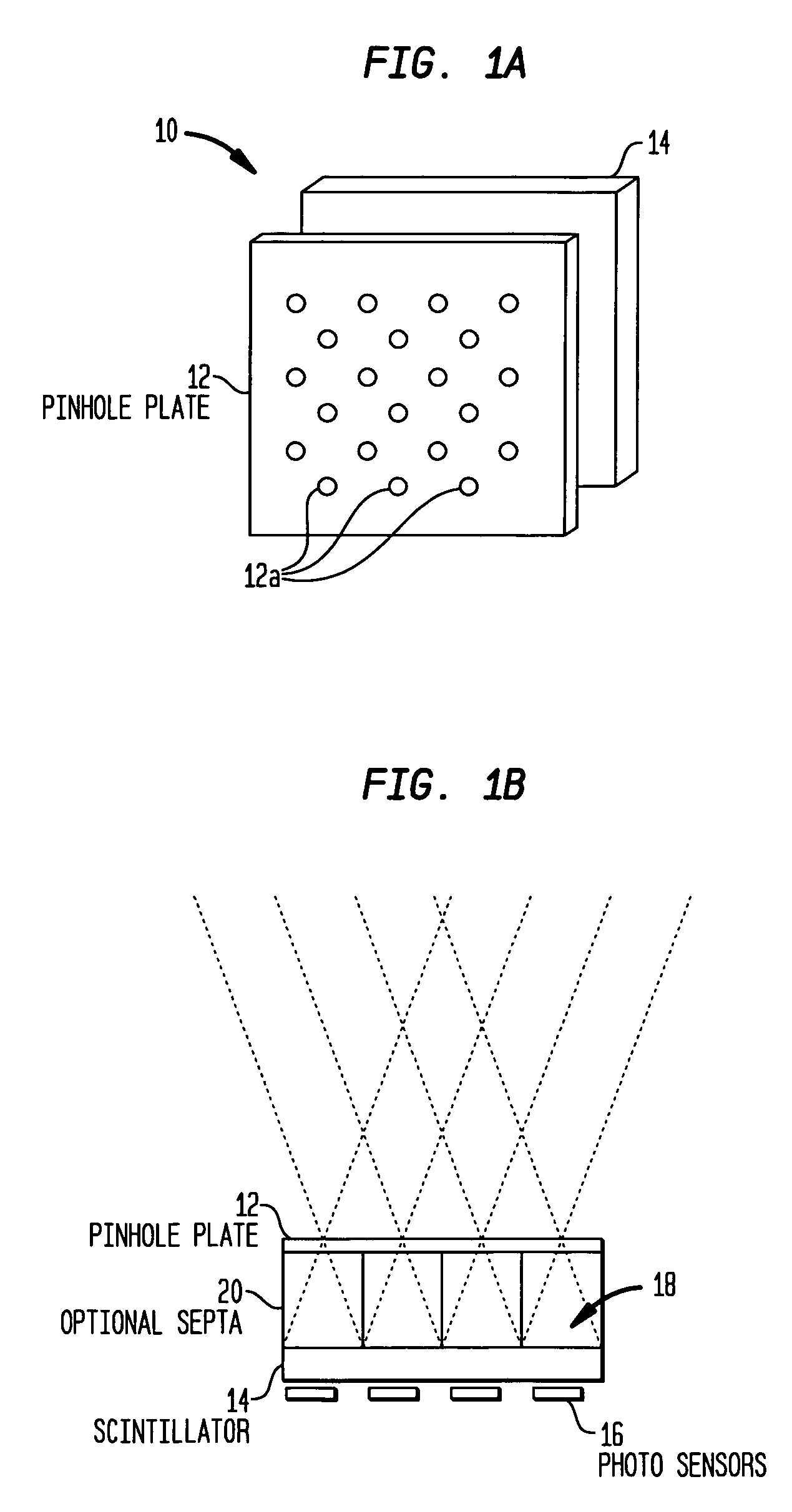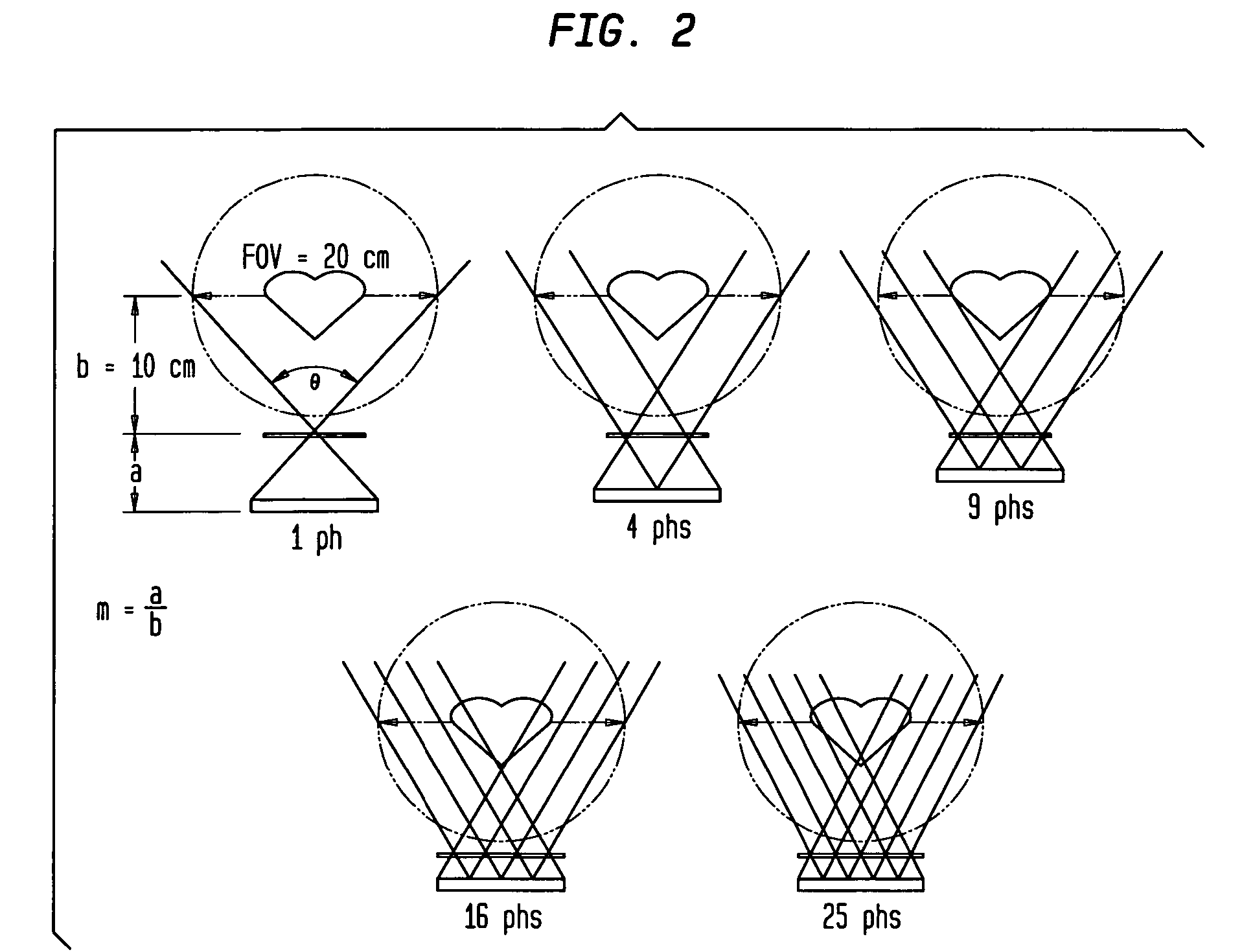Multi-pinhole collimation for nuclear medical imaging
a multi-pinhole collimation and nuclear medical imaging technology, applied in nuclear engineering, instruments, handling using diaphragms/collimeters, etc., can solve the problem of not being able to increase the intrinsic spatial resolution of gamma cameras with strong incentives, and achieve the effect of increasing sensitivity without sacrificing spatial resolution
- Summary
- Abstract
- Description
- Claims
- Application Information
AI Technical Summary
Benefits of technology
Problems solved by technology
Method used
Image
Examples
Embodiment Construction
[0022] Referring to FIG. 1(a), according to one preferred embodiment of the invention, a multi-pinhole collimator detector 10 includes a pinhole plate 12 spaced apart from a scintillator 14. The pinhole plate 12 contains a number of pinholes 12a formed therein. The pinhole parameters such as pinhole diameter and shape, pinhole collimator material, pinhole arrangement, number of pinholes, focal length and acceptance angle are not fixed, but are determined subject to optimization based on required system performance specifications for the particular system being designed, as will be understood by those skilled in the art.
[0023]FIG. 1(b) is a cross-sectional view of FIG. 1(a) and illustrates multiple conical projections on segmented detector surfaces in segmented detector cells 18, where the conical projections do not overlap each other. Detector segmentation can be achieved by placing septa 20 made of suitable dense material such as lead, etc. between the pinhole plate 12 and the sci...
PUM
 Login to View More
Login to View More Abstract
Description
Claims
Application Information
 Login to View More
Login to View More - R&D
- Intellectual Property
- Life Sciences
- Materials
- Tech Scout
- Unparalleled Data Quality
- Higher Quality Content
- 60% Fewer Hallucinations
Browse by: Latest US Patents, China's latest patents, Technical Efficacy Thesaurus, Application Domain, Technology Topic, Popular Technical Reports.
© 2025 PatSnap. All rights reserved.Legal|Privacy policy|Modern Slavery Act Transparency Statement|Sitemap|About US| Contact US: help@patsnap.com



